The Roman Baths at Bath and Caerleon
The Romans loved their baths and built them all over Britain. The best places to see remains of these baths are at Bath in south west England (which is of course named after the Roman baths), and at Caerleon in south Wales. I visited these two Roman sites in August 2010 and took lots of pictures. Here they are!
Bath
The baths at Bath are unusual, because the whole town arose because of hot springs that the Britons had seen as holy for centuries. The Romans also saw the site as holy, and they joined the Celtic god of the springs, Sulis, with their own goddess Minerva. They built a complex of baths heated by the hot springs (and by the usual furnaces). There was also a temple to Sulis-Minerva, and in the museum at Bath you can see some of the carvings above the temple entrance, including a sculpture of the god.

Model of the baths complex at Bath

The sacred spring at Bath. A channel takes this hot water into the open air pool (see below).


Cold water pool
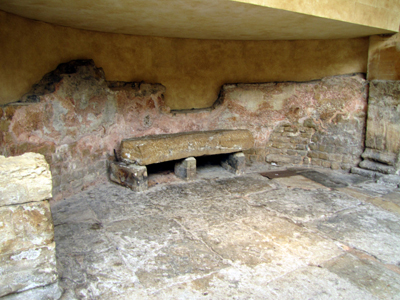
Next to the open air pool were alcoves like this, where visitors could relax after bathing, chat with friends, play games (gambling for money), and eat snacks sold by vendors.
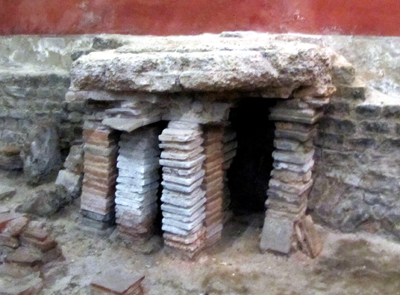
Under the steam room (caldarium) there were stacks of tiles, supporting the floor. This made a space into which hot air was driven from furnaces. This made the caldarium very hot - in fact so hot they visitors had to wear wooden shoes so they didn't burn their feet.

Replica of a glass jar used to keep olive oil in. After warming up with exercise and the warm room, the bathers would rub oil into their skin (or a slave would do it). Then after sweating in the hot room they would scrape the oil off with a strigil. This was how the Romans cleaned themselves - not with soap and water like we do.

A lead pipe carrying water to the open air pool.
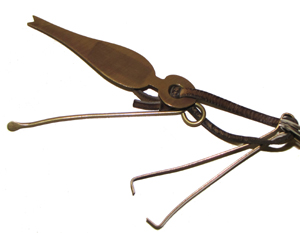
As well as scraping oil off their skins, bathers could clean out their ears, nails, and teeth, and pull out unwanted hairs, with bronze tools like these.
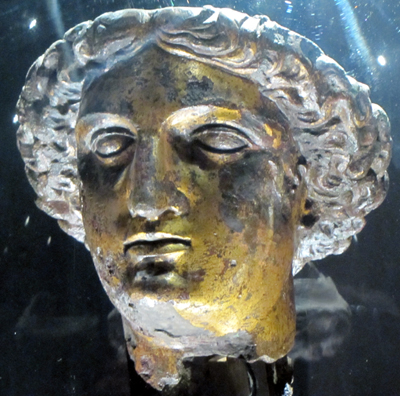
Head of the statue of the goddess Minerva from the temple at Bath. The statue was made of bronze and then gilded - covered on layers of gold. A a goddess of war Minerva would have had a helmet on her head, which is now missing.
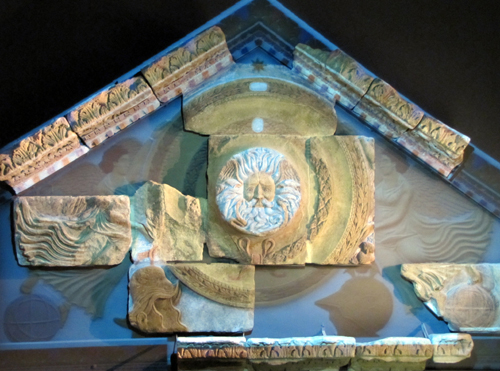
The pediment of the temple of Sulis Minerva, in the museum at the Roman baths at Bath. The sculptures would have been painted, and this is shown by shining coloured light onto them. In the centre is the head of Sulis-Minerva. Actually the head represents the gorgon Medusa, which was worn on Minerva's breastplate. Medusa was female, however, and if you look closely you can see this face is male, as it has a Celtic moustache. More than any other sculpture, this shows how the Romans and Celts of Britain joined their two cultures together. The pediment also shows Minerva's helmet and the owl, two of her symbols. Minerva was herself based on the Greek goddess Athena.
Caerleon
Caerleon is a small town in south Wales, near Newport. It is well worth a visit as it has an excellent bath museum, another museum showing Roman finds, the best remains of legionary barracks in Europe, and the best amphitheatre in Britain. Caerleon was a major Roman site, one of only three permanent legionary fortresses in Britain (the other two were Chester and York). Around 5,500 soldiers were stationed there - the Second Augustan Legion, named after emperor Augustus.

Reconstruction of the cold bath hall (frigidarium).
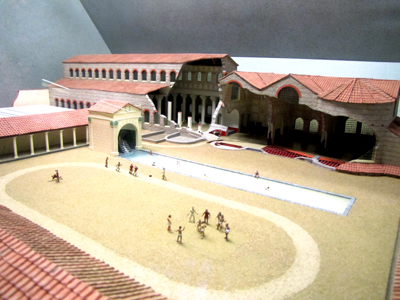
Model of the baths at Caerleon. They were built for the soldiers and were enormous - the length of the exercise hall and the three halls of the bath suite, which you see at the back, is 100 metres (360 feet). There was an outside pool called the natatio (which must have been freezing!) and an outdoor exercise ground.
The baths were constructed around 75-77AD, at the same time as the fortress. They were in use until 230-240AD, and finally stripped of all useable materials around 300AD. The structure lasted much longer however, until around the 12th century.

The fountain house, at one end of the natatio.
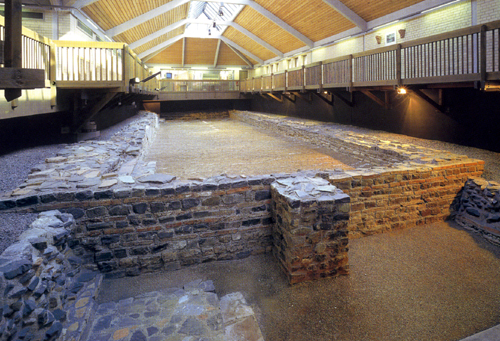
The natatio, or outside pool, now covered in the Caerleon Baths Museum. This pool was 41 metres long (135 feet), bigger than the pool at Bath, and was continuously supplied with water through lead pipes. The depth of the water went from 1.2m at one end to 1.6m at the other.
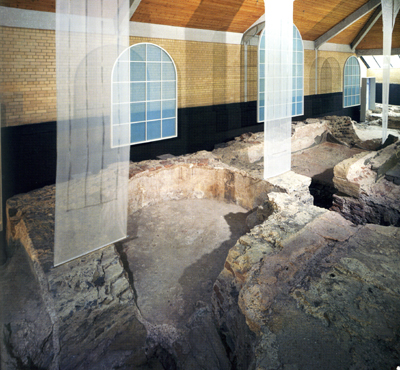
The frigidarium (cold rooms).
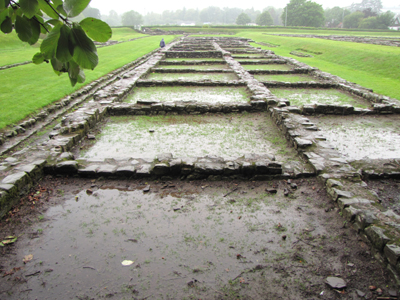
The barracks at Caerleon. Eight men would sleep in one room, and have another to keep their gear in.